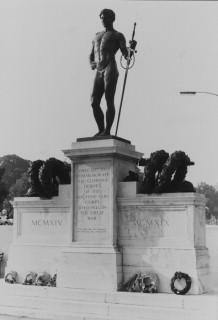So long, Emma Gees
Francis Derwent Moore, 1919
In February 1921, Walter and the 8th Bn. Machine Gun Corps left Mesopotamia and returned to India. But that wasn't the only change he faced:
After we were settled in Deolali, our commanding officer informed us all that as the Machine Gun Corps was only a temporary war time organization, it was being disbanded, and we were given three alternatives as to what we could decide for ourselves.
(1) Be discharged from the service. That didn’t suit me, a s I had 13 years service, and I wasn’t to lose that.
(2) Be transferred to the Armoured Cars Units. That, too, didn’t appeal to me.
(3) or be transferred to an infantry unit serving in India.
This was my choice, and I applied to re-join my original unit, the 2nd Battalion Lincolnshire, who were then serving in Poona.
Arrangements were made for my transfer, and I was duly posted to my regiment. And I arrived in Poona March 1921. The commanding officer and the other officers knew me from my previous service with the regiment. I was posted to the Signalling Platoon. I took great interest in this work, and I was told I would be sent to the Signalling school to qualify for an Instructors Certificate.
Walter stayed in India with 2nd Bn. Lincolnshires until late 1929 and his return back to England.


0 Comments:
Post a Comment
Subscribe to Post Comments [Atom]
<< Home